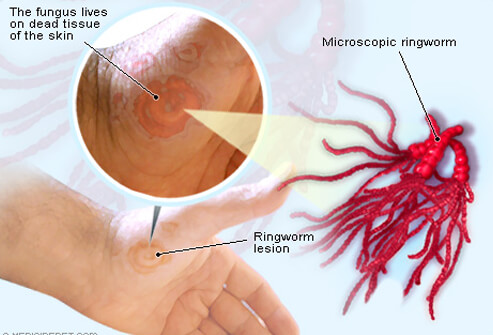Ringworm, otherwise known as Tinea, is an exceptionally infectious parasitic disease that happens in the skin. Ringworm is abnormally common, this particularly valid among youngsters. Ringworm can be spread by skin-to-skin contact, much the same as it can with contact with things like a hairbrush. A person can be infected before they even demonstrate any of the side effects, which implies that they are unaware, and have no possibility of stopping the spread of the bug.
People in many cases will contract ringworm from their pet creatures, for example, felines and puppies. These creatures are at greater hazard because of their lifestyles and that they are regularly transporters of ringworm. Much the same as these creatures are in danger it is also true with people who are associated with contact games, for example, wrestling, or even hockey, football, and rugby. Fundamentally any moment where there is expanded skin contact with a foreign body raises the chances of the ringworm transmission.
We generally neglect the number of species in this family that cause ringworm. Different organisms will assault different parts of the body. Regular ones that we have to hear commonly are jock itch which influences the crotch, and athlete’s foot which affects the feet. There are a few others, but those are the most known.
Ringworm, once in full force, is easy to spot as it leaves behind red scars on the skin that are raised and have characterized edges. These patches can frequently be lighter in the middle, which makes the disease take on the presence of a ring. Specialists can analyze ringworm at first sight. If this isn’t happening, they take a skin scratching. Examination of the scratching under a magnifying lens will give a right analysis.

